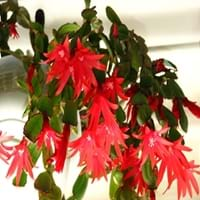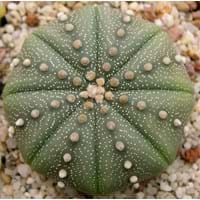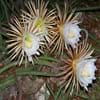Life Span
Perennial
Perennial
Type
Cactus or Succulent
Ornamental Plant
Origin
South America, Brazil
Not Available
Types
Not Available
Not Available
Habitat
Rocky areas, Terrestrial, Tropical regions
Desert, Semi desert
USDA Hardiness Zone
11-12
12-15
Sunset Zone
16, 17, 21, 22, 23, 24
21, 22, 23, 24
Habit
Prostrate/Trailing
Oval or Rounded
Flower Color
Red, Magenta, Crimson
Yellow
Flower Color Modifier
Not Available
Not Available
Fruit Color
Non Fruiting Plant
Non Fruiting Plant
Leaf Color in Spring
Not Available, Pale Green
Not Available
Leaf Color in Summer
Dark Green
Not Available
Leaf Color in Fall
Dark Green
Not Available
Leaf Color in Winter
Dark Green
Not Available
Leaf Shape
Succulent
Elliptic
Plant Season
Spring, Winter
Not Available
Sunlight
Full Sun
Not Available
Growth Rate
Medium
Very Slow
Type of Soil
Loam, Sand
Not Available
The pH of Soil
Neutral
Not Available
Soil Drainage
Well drained
Not Available
Bloom Time
Early Spring, Winter, Late Winter
Spring
Repeat Bloomer
No
Not Available
Tolerances
Heat And Humidity, Heat Tolerance
Not Available
Where to Plant?
Container, Ground, Pot
Container, Ground, Pot
How to Plant?
Stem Planting
Cuttings, Stem Cutting
Plant Maintenance
Low
Medium
Watering Requirements
Do Not over Water, Keep the ground moist but not water-logged, Never Over-water, Requires consistently moist soil, Requires regular watering, Requires watering in the growing season, Water more in summer
Needs very little water
In Summer
Ample Water
Lots of watering
In Spring
Ample Water
Moderate
In Winter
Average Water
Average Water
Soil pH
Neutral
Not Available
Soil Type
Loam, Sand
Not Available
Soil Drainage Capacity
Well drained
Not Available
Sun Exposure
Full Sun
Not Available
Pruning
Remove damaged leaves, Remove dead leaves, Remove dead or diseased plant parts
Remove damaged leaves, Remove dead branches, Remove dead leaves
Fertilizers
All-Purpose Liquid Fertilizer, fertilize in growing season, fertilize in spring
All-Purpose Liquid Fertilizer
Pests and Diseases
Bacterial Diseases, Fungal Diseases, Red blotch
Mealy bugs
Plant Tolerance
Heat And Humidity, Heat Tolerance
Drought
Flowers
Showy
Not Available
Flower Petal Number
Single, Semi-Double
Single
Fragrant Fruit
No
Not Available
Fragrant Bark/Stem
No
Not Available
Showy Foliage
No
Not Available
Showy Bark
No
Not Available
Foliage Texture
Bold
Bold
Foliage Sheen
Not Available
Not Available
Invasive
No
Not Available
Self-Sowing
No
Not Available
Attracts
Hummingbirds
Hummingbirds
Allergy
breathing problems
Not Available
Aesthetic Uses
Beautification, Landscape Designing, Showy Purposes
Showy Purposes
Beauty Benefits
No Beauty Benefits
Not Available
Environmental Uses
Air purification, Indoor Air Purification
Air purification
Medicinal Uses
No Medicinal Use
No Medicinal Use
Part of Plant Used
Leaves
Not Available
Other Uses
Decoration Purposes, Showy Purposes, Used as Ornamental plant
Not Available
Used As Indoor Plant
Yes
Yes
Used As Outdoor Plant
Yes
Yes
Garden Design
Container, Hanging Basket, Houseplant, Tropical
Bedding Plant
Botanical Name
Hatiora gaertneri
Astrophytum myriostigma
Common Name
Whitsun cactus
Bishop's Cap Cactus, Bishop's Hat, Bishop's Miter Cactus ,Star Cactus
In Hindi
ईस्टर कैक्टस
Star Cactus
In German
Osterkaktus
Star Cactus
In French
cactus de Pâques
Star Cactus
In Spanish
cactus de Pascua
Star Cactus
In Greek
Πάσχα κάκτος
Star Cactus
In Portuguese
cacto Páscoa
Star Cactus
In Polish
Wielkanocny kaktus
Star Cactus
In Latin
Pascha Cactus
Star Cactus
Phylum
Tracheophyta
Magnoliophyta
Class
Magnoliopsida
Magnoliopsida
Order
Caryophyllales
Caryophyllales
Family
Cactaceae
Cactaceae
Genus
Hatiora
Astrophytum
Clade
Angiosperms, Core eudicots, Eudicots
Angiosperms, Core eudicots, Eudicots
Tribe
Rhipsalideae
Cacteae
Subfamily
Cactoideae
Cactoideae
Number of Species
Not Available
Properties of Easter cactus and Bishop's Cap Cactus
Wondering what are the properties of Easter cactus and Bishop's Cap Cactus? We provide you with everything About Easter cactus and Bishop's Cap Cactus. Easter cactus doesn't have thorns and Bishop's Cap Cactus doesn't have thorns. Also Easter cactus does not have fragrant flowers. Easter cactus has allergic reactions like breathing problems and Bishop's Cap Cactus has allergic reactions like breathing problems. Compare all the properties and characteristics of these two plants. Find out which of these plant can be used as indoor plant. If you are interested to decorate your house and garden, find out aesthetic uses, compare them and select the plant which will beautify your surrounding. Along with beautification, try comparing medicinal and edible uses of Easter cactus and Bishop's Cap Cactus and you can choose the plant having best and most benefits.
Season and Care of Easter cactus and Bishop's Cap Cactus
Season and care of Easter cactus and Bishop's Cap Cactus is important to know. While considering everything about Easter cactus and Bishop's Cap Cactus Care, growing season is an essential factor. Easter cactus season is Spring and Winter and Bishop's Cap Cactus season is Spring and Winter. The type of soil for Easter cactus is Loam, Sand and for Bishop's Cap Cactus is Not Available while the PH of soil for Easter cactus is Neutral and for Bishop's Cap Cactus is Not Available.
Easter cactus and Bishop's Cap Cactus Physical Information
Easter cactus and Bishop's Cap Cactus physical information is very important for comparison. Easter cactus height is 25.40 cm and width 30.50 cm whereas Bishop's Cap Cactus height is 25.00 cm and width 20.30 cm. The color specification of Easter cactus and Bishop's Cap Cactus are as follows:
Easter cactus flower color: Red, Magenta and Crimson
Easter cactus leaf color: Not Available and Pale Green
Bishop's Cap Cactus flower color: Yellow
- Bishop's Cap Cactus leaf color: Not Available
Care of Easter cactus and Bishop's Cap Cactus
Care of Easter cactus and Bishop's Cap Cactus include pruning, fertilizers, watering etc. Easter cactus pruning is done Remove damaged leaves, Remove dead leaves and Remove dead or diseased plant parts and Bishop's Cap Cactus pruning is done Remove damaged leaves, Remove dead branches and Remove dead leaves. In summer Easter cactus needs Ample Water and in winter, it needs Average Water. Whereas, in summer Bishop's Cap Cactus needs Lots of watering and in winter, it needs Average Water.





